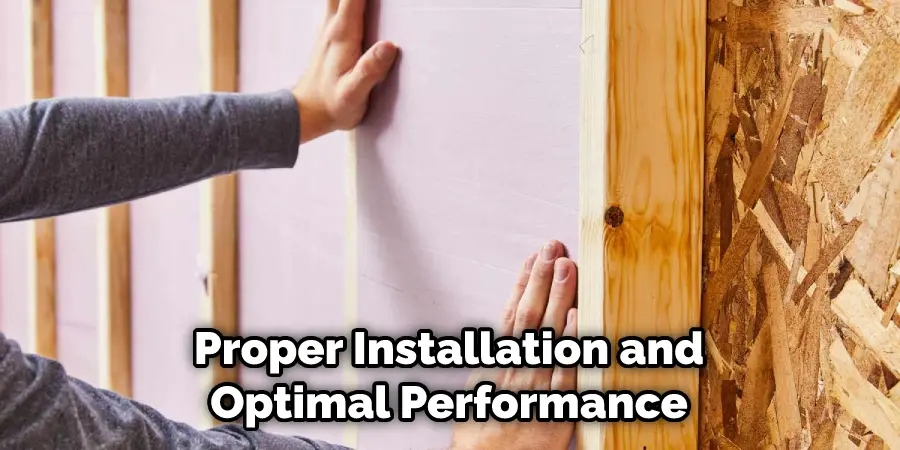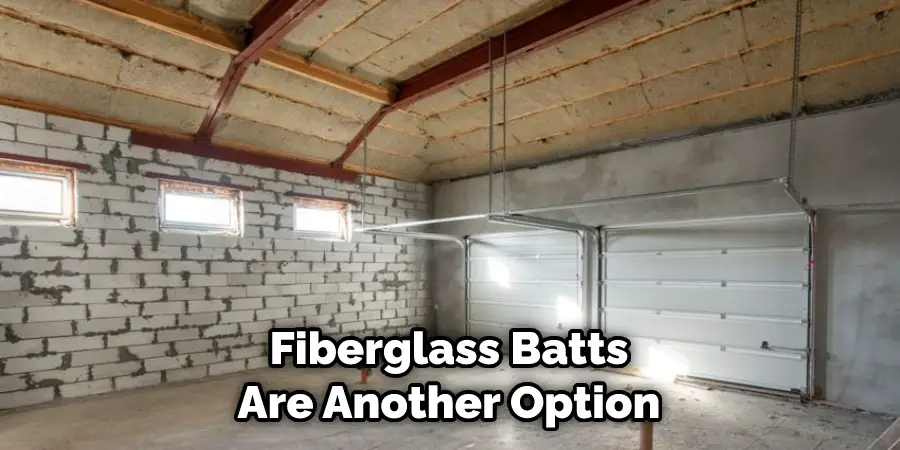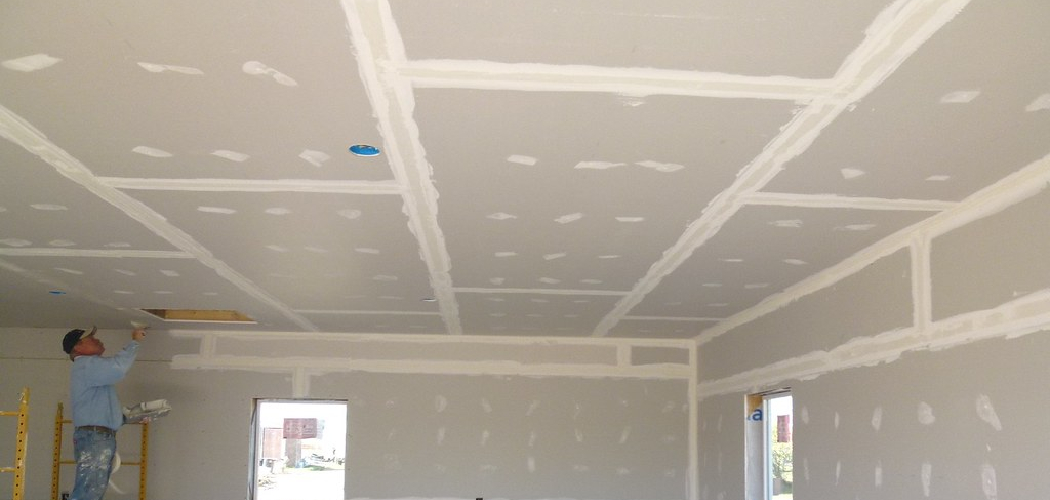Do you have a garage that is already drywalled but not insulated? You might be wondering how on earth you can go about insulating the walls without having to tear out all of the drywall. The good news is that there are some easy and cost-effective ways to add insulation to your existing walls without starting over from scratch!

In this blog post, we’ll teach you step-by-step how to insulate garage walls that are already drywalled in an efficient and safe manner. Whether you want added warmth or improved soundproofing, this guide will help make sure you don’t throw money away while getting the most efficiency out of your effort.
Summary: Garage walls that are already drywalled can be insulated in order to help reduce energy costs and maintain a comfortable temperature inside the garage. Insulating these walls will also increase soundproofing to keep noise from entering or leaving the garage. The most common way to insulate dry-walled garage walls is by using fiberglass batt insulation.
What Insulation is Best for Garage Walls?
When it comes to insulating a garage with drywall, the most effective and cost-efficient option is fiberglass batt insulation. Fiberglass batts are made of thousands of tiny fibers that form a fibrous layer that traps air and provides an excellent thermal barrier. The R-value of fiberglass batt insulation ranges from R-13 to R-21, depending on the thickness of the insulation.
Spray foam insulation is another popular option for insulating garage walls with drywall. It provides an excellent thermal barrier and can also fill in gaps around edges, windows, and openings that regular fiberglass batts may leave uncovered.
The downside to spray foam is that it can be more expensive than fiberglass batt insulation, and it may require the help of a professional installer for the best results.
Insulating your garage with drywall provides a great way to maintain comfortable temperatures inside the space without having to rely on the air conditioning or heating systems. With the right type of insulation and a few simple steps, you can have a comfortable and energy-efficient garage in no time.
No matter which type of insulation you choose, make sure you follow the manufacturer’s instructions carefully to ensure proper installation and optimal performance. With a little effort, your garage walls will be insulated and ready to enjoy all year round.

10 Methods on How to Insulate Garage Walls that Are Already Drywalled
1. Add Extra Layers of Drywall
If your garage walls are already drywalled, you can add extra layers of drywall to help insulate them. This is a relatively simple and inexpensive way to add insulation to your garage walls. However, this option may not be the most effective way to insulate your garage walls as it is difficult to ensure a good seal between two layers of drywall.
2. Use Rigid Foam Insulation
Rigid foam insulation is another option for insulating garage walls that are already drywalled. This type of insulation is available in sheets that can be cut to fit your wall space. Rigid foam insulation is easy to install and provides good thermal protection.
It is also effective at reducing air leakage and blocking moisture. It is important to note that using rigid foam insulation may require an additional layer of drywall to protect the foam from damage.
3. Apply a Vapor Barrier
Applying a vapor barrier to your garage walls can also help to insulate them. A vapor barrier is a material that prevents moisture from passing through it. This can help to keep your garage walls dry and free from mold and mildew. You can purchase a vapor barrier at your local hardware store.
When you install, make sure to overlap the seams by at least six inches and seal them with tape. This will ensure that the barrier is properly installed and effective at preventing moisture from entering your garage walls.
4. Install Fiberglass Batts
Fiberglass batts are another option for insulating garage walls. Fiberglass batts are usually found in rolls and come pre-cut in various widths to fit into standard wall cavities. To install fiberglass batts, cut the batts to fit into the wall cavities with a utility knife.

Make sure there is at least a one-inch gap between the batt and the wall studs. Secure the batt with staples or nails at least every 16 inches. Finally, seal any seams between batts with fiberglass tape or mastic sealant. With proper installation, fiberglass batts are an effective and affordable way to insulate garage walls.
5. Use Spray Foam Insulation
Spray foam insulation is another option for insulating garage walls. This type of insulation comes in a spray can and can be applied directly to the wall surface. Spray foam insulation is easy to apply and provides excellent thermal protection. It also helps to reduce noise from outside the garage. However, it can be expensive and is not as effective as other types of insulation.
Therefore, it should only be used in areas where other methods are not feasible or cost-effective. Additionally, it is important to wear protective clothing when applying spray foam insulation since it may contain chemicals that could irritate the skin.
It is also important to ensure that any gaps or cracks in the wall surface are filled with spray foam prior to applying it, as this will help to maximize its effectiveness.
6. Install Rigid Foam Board Insulation
Rigid foam board insulation is another option for insulating garage walls. This type of insulation comes in large sheets and can be easily cut to fit into any space.
It is lightweight and easy to install, but it must be covered with a vapor barrier to prevent moisture build-up. You can either use an adhesive to attach the boards directly to the drywall or use battens to create a space for the insulation.
Make sure you secure the foam boards in place with screws and washers, as they can be easily dislodged. When installing rigid foam board insulation, be sure to wear protective gear, such as safety glasses and gloves, to protect yourself from airborne particles. After installation, seal any seams or gaps with spray foam insulation to ensure an airtight fit.
7. Use Reflective Foil Insulation
Reflective foil insulation is another option for insulating garage walls. This type of insulation comes in rolls that can be cut to size and installed between the studs in your wall or on the outside of the drywall itself. Reflective foil insulation reflects heat back into the room, which helps to keep the space warmer.

8. Install Radiant Barrier Insulation
Radiant barrier insulation is another option for insulating garage walls that are already drywalled. This type of insulation comes in sheets that can be cut to size and installed between the studs in your wall or on the outside of the drywall itself. Radiant barrier insulation helps to reflect heat and cold away from the space, which keeps temperatures inside the garage more consistent.
This type of insulation is especially helpful in warmer climates, as it keeps your garage cooler during the summer months. Additionally, radiant barrier insulation can be installed without taking down the drywall, making it an easy-to-install solution.
9. Use Cellulose Insulation
Cellulose insulation is another option for insulating garage walls that are already drywalled. This type of insulation comes in loose-fill or spray form and can be installed in the walls of your garage.
It is important to note that cellulose insulation does not provide much thermal protection, but it can help to improve air quality in your space. Additionally, cellulose insulation is more cost-effective than other types of insulation and is environmentally friendly since it’s made from recycled paper products.
10. Install Radiant Heat Flooring
Finally, you may also want to consider installing radiant heat flooring in your garage. Radiant heat flooring is a great way to keep your garage warm during the colder months. Installing radiant heat flooring requires some specialized tools and materials, but it can provide significant energy savings over time.
With so many options for insulating garage walls that are already drywalled, you have plenty of ways to keep your garage warm and comfortable. Make sure to consider all of your options before deciding which one is best for you. With a little bit of research and a bit of planning, you can ensure that your garage is both comfortable and safe for years to come.

Conclusion
If your garage walls are already drywalled, you can still insulate them with a few simple steps on how to insulate garage walls that are already drywalled.
By adding batting or foam board insulation to the inside of your garage walls, you can create a more comfortable space that is better insulated against the elements.
With some basic supplies and a little bit of time, you can make your garage a more pleasant place to be – no matter what the weather is like outside.
I am Rick. I grew up helping my dad with his handyman service. I learned a lot from him about how to fix things, and also about how to work hard and take care of business. These days, I’m still into fixing things- only now, I’m doing it for a living.
I’m always looking for new ways to help people grow and develop. That’s why I have created this blog to share all my experience and knowledge so
that I can help people who are interested in DIY repair.

